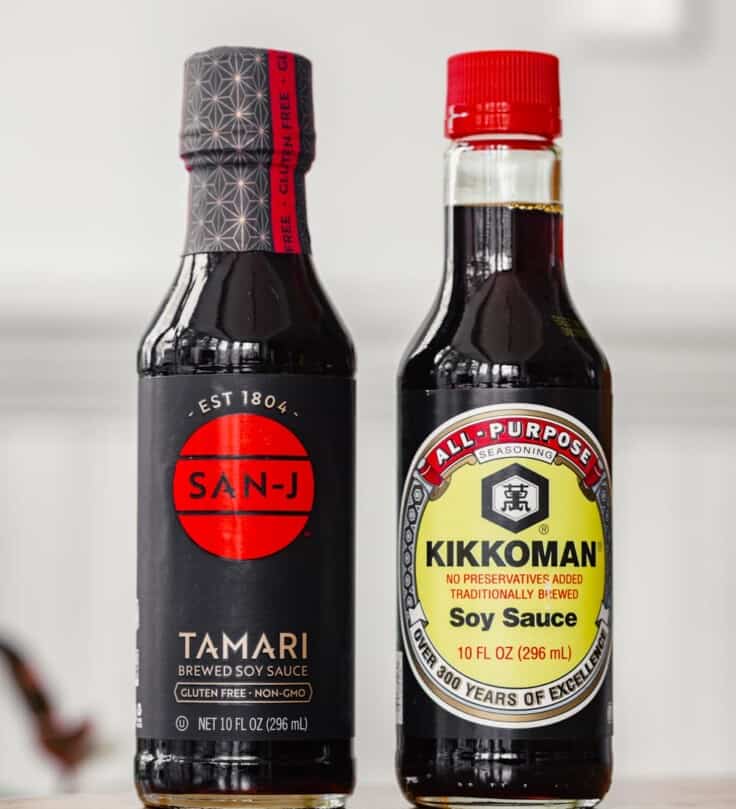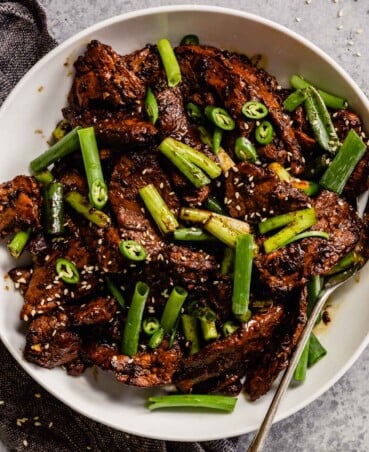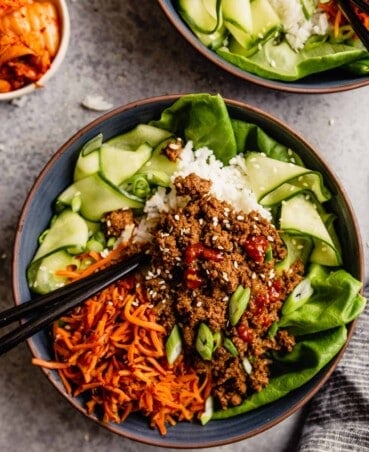Many recipes list soy sauce and tamari as interchangeable ingredients. But are they the same thing? What’s the difference between tamari and soy sauce? After testing recipes with both sauces, we figured it was time to understand their differences in ingredients, preparation, and resulting flavor. Here’s what we found.
What is Tamari?
Tamari is a variety of soy sauce and is a byproduct of making miso paste, aka fermented soybeans. Made with a higher volume of soybeans and little-to-no wheat, it has a slightly thicker consistency than Chinese traditional soy sauce.
Additionally, since tamari is traditionally made with no wheat, it’s a great gluten-free soy sauce option for those with gluten intolerance; however, make sure you diligently check the label and ingredient list to be sure!
If we break down tamari’s flavor profile, it is summed up in a few words: rich in umami, mellow, low in salt, and slightly thicker.
What is Soy Sauce?
A salty condiment of Chinese origin, soy sauce is made with soybeans, wheat, and salt. The mixture is then brewed together and left to ferment.
The fermented byproduct can be up to 50% wheat in structure and is relatively high in sodium content. When the fermented mixture is pressed, the liquid released is what we have come to know and love, as soy sauce.
The easiest way to think of soy sauce is a salty sauce or flavor additive that packs a big punch of sodium and umami with a thin consistency!
Difference Between Tamari and Soy Sauce
Tmari and soy sauce can often be used interchangeably due to their similarities in flavor and color. But there are some important differences to be aware of—most notably the presence of wheat in soy sauce and the lack of wheat in tamari.
What you need to know:
- Tamari: Japanese soy sauce made from fermented soy beans. No gluten, less salty, slightly thicker.
- Soy Sauce: Chinese soy sauce made from fermented soy beans and toasted wheat grain. Contains gluten, saltier and thinner.
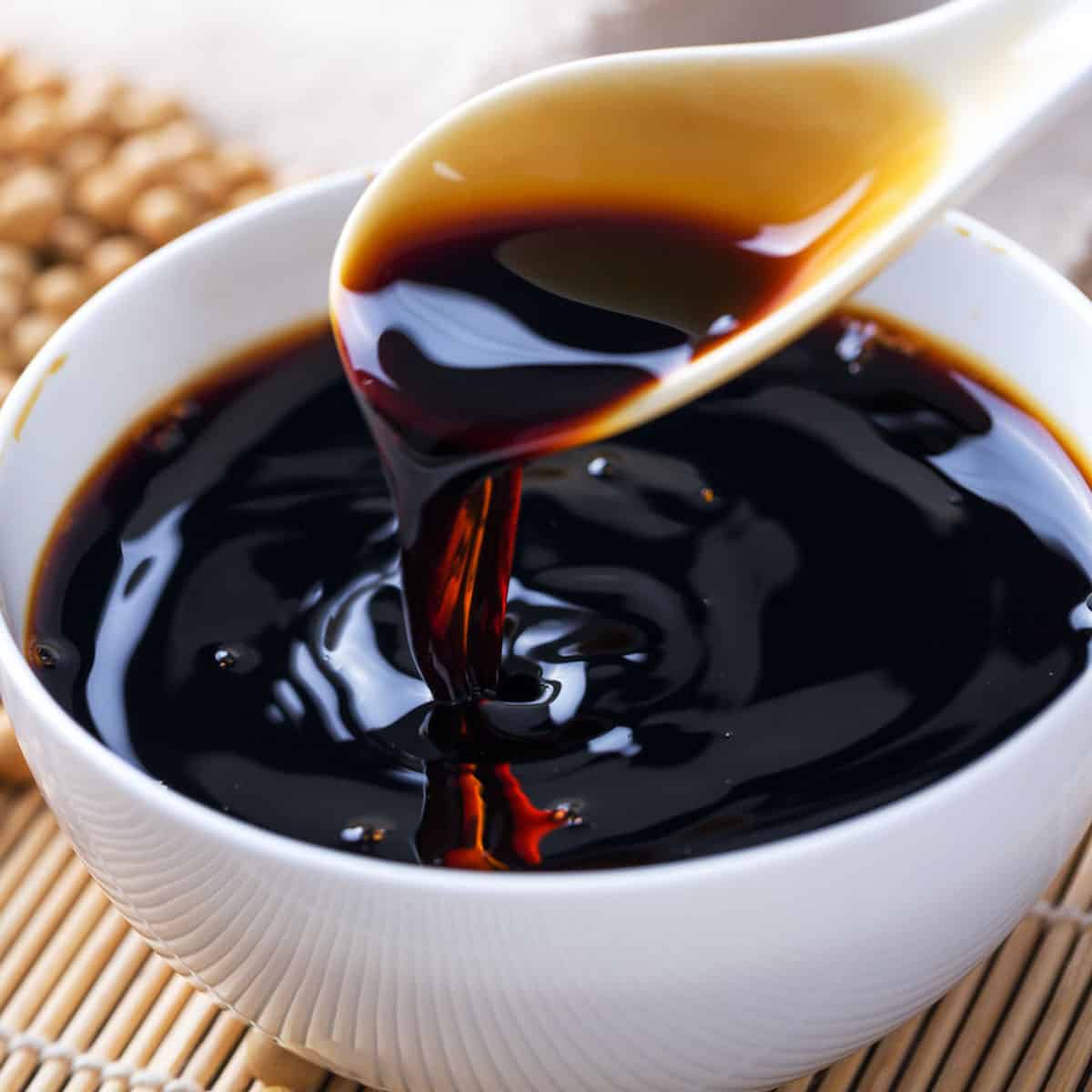
What Does Tamari Taste Like?
Tamari sauce has a richer, smoother, and slightly thicker consistency than regular soy sauce. It has a deep umami flavor with notes of caramel and a slight sweetness. Tamari sauce is less salty than regular soy sauce, has a less harsh taste, and is more soy-forward in flavor.
How to Use Tamari
Given that tamari is higher in protein and contains fewer additives, yet produces a strong umami flavor, many vegetarian and vegan dishes use tamari to add a ‘meatiness’ profile to the plate.
Tamari, unlike soy sauce, does not typically overwhelm foods with its flavor. It’s a great addition to soups, stews and sauces. Because tamari has a subdued saltiness and a thicker consistency, it’s often used as a dipping sauce or marinade for dumplings, raw fish, and noodles.
Flip the coin, and there’s soy sauce. Soy sauce can be used on its own as a dip as well. However, keep in mind that it has 900mg per tablespoon of sodium. The high sodium content of soy sauce can quickly overwhelm the ‘dip-ee’ if too much is used. For this reason, soy sauce is often used as a components of a sauce or marinade, and not the main attraction.
So, while tamari sauce and soy sauce can be used as substitutes for one another, it’s important to note the differences. Things like consistency, sodium levels, and flavor profile can impact the final dish.
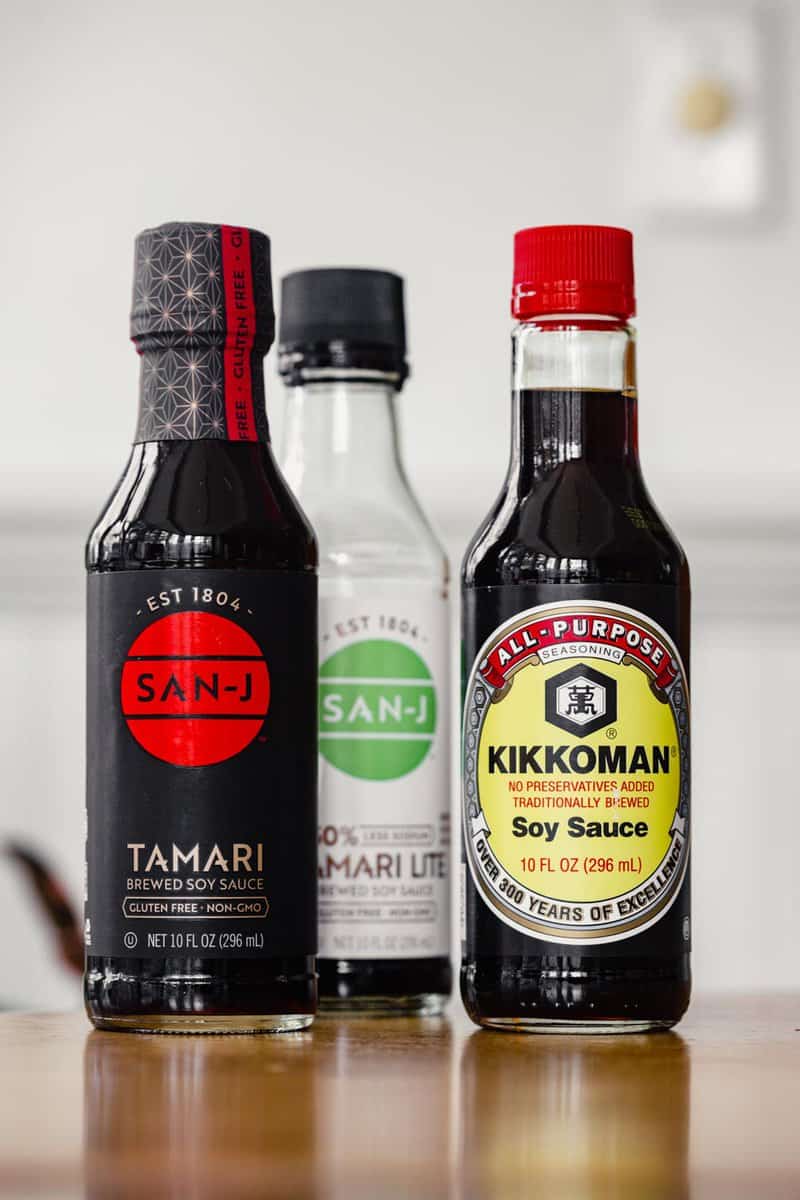
Is Tamari Healthier?
If you’re concerned about sodium intake, then tamari is a healthier and better choice for you. Tamari sauce has approximately 233 mg of sodium per tablespoon compared to soy sauce’s 900 mg of sodium per tablespoon. Neither are a good source of protein, carbs, or fiber.
Buying and Storing
You can find soy sauce in the condiment aisle of most small markets or large grocery chains, as well as specialty Asian Markets. Its popularity in Western culture makes this pantry staple easily accessible in most parts of the country.
Similarly, tamari can be found in most local grocery aisles, large or small. While every grocer is different, the condiment aisle or ‘ethnic/Asian’ described sections are the first places you may want to look.
When storing soy sauce, a constant temperature is best. Try to avoid locations near a stove or dishwasher, where temperatures fluctuate. The ideal place for soy sauce is a cool, dark cabinet stored in its original container. Soy sauce does not lose flavor or freshness when stored at room temperature.
Keeping an unopened bottle in a cool, dry, and dark place, such as a pantry, is vital when storing tamari sauce. Once opened, tamari can be stored in the refrigerator to preserve shelf life and flavor.
Try Tamari in These Recipes
Our Pork Bulgogi gets a lot of flavor from either soy sauce or tamari. Use whichever you prefer!
In keeping with the bulgogi theme, try out Ground Beef Bulgogi Bowls. They’re a great way to enjoy the delectable flavors of bulgogi on a weeknight.
Saucy Korean Tofu and Pork is a super-savory, protein-packed dinner. Pair this hearty meal with rice for a full meal.
Use tamari in place of the soy sauce in our delicious glaze for for Beef Negimaki.
Another weeknight dinner that needs to be on the menu is Miso Glazed Salmon. It’s savory, sweet and satisfying when paired with rice or a simple Chinese Smashed Cucumber Salad.

